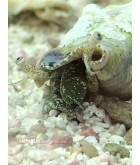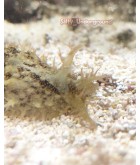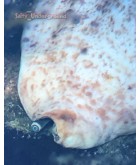Plankton. It isn't a species or type of plant or animal. Plankton is the term used to describe all free floating organisms in open water (marine and fresh). Although we may usually think of plankton as being microscopic species, many can be seen by the naked eye (such as copepods) or can even be quite large organisms (like some species of jellyfish). Plankton float with the ocean's current and will even fall to the extreme depths of the ocean (the benthic zone) in the form of “marine or reef snow”.
The water found at corals reefs, and in your home aquarium, should always have a healthy population of plankton. Plankton is important for a variety of reasons. To begin, it makes a terrific natural food source. Fish rely on plankton as a major food source as some point in their life cycle, most significantly in their larval stage. Additionally, many corals will capture zooplankton and bacterioplankton as food, despite their reliance on zooxanthellae (dinoflagellate algae) for nutrition via photosynthesis. In addition to their position as a food source, many forms of plankton contribute greatly to the breakdown of organic matter in the system. Many, such as amphipods, are scavengers, and will feed on the detritus and waste material (or alternatively, become the detritus after death) found in your small, closed system of a home aquarium. In this way, they contribute to the carbon cycle of the marine aquarium.
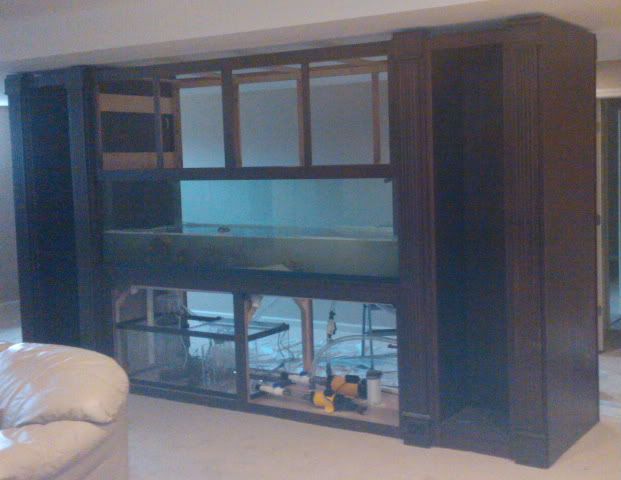
There are a variety of methods to both encourage and discourage the growth of plankton in your aquarium. The use of skimmers and filters will commonly remove free floating organic matter from the aquarium. This will remove plankton directly or remove their source of food. Some corals will thrive in your aquarium in the absence of a skimmer specifically because they will feed on the plankton that would normally be removed in the traditional filtration process.
The increased use of sumps as refugiums actually encourages the growth of plankton in your home system. Zooplankton and phytoplankton can live in the refugium without being over harvested by the fish, corals, and other invertebrates found in the display tank. On a regular basis, some of that plankton will be washed through the display tank and contribute food. As waste and detritus is washed into the sumps, the plankton will feed on it, breaking down the organic matter. Many aquarists intentionally add macroalgae to the sump to aid in sheltering the zooplankton.
Types of Plankton
There are a couple of ways to classify plankton. The first is by life cycle. Organisms which spend their entire lives as plankton are called holoplankton. Some examples of holoplankton are copepods, diatoms, and many algae. In contrast, meroplankton only spend a portion of their lives as plankton. For example, many species of fish, corals, and echinoderms spend their larval stage as plankton before maturation into a mobile organism.
The other way to classify plankton is by “trophic level”, their place in the food web as producer, consumer, or decomposer. For plankton, these groups are called phytoplankton, zooplankton, and bacterioplankton.
Phytoplankton is comprised of the algae and cyanobacteria (see also, bacterioplankton). These are producers, as they are primarily autotrophic, creating their own nutrients via photosynthesis. (Along deep sea vents, there are organisms that are autotrophic via “chemosynthesis”.) They can range from the unicellular forms (single celled algae) to multicellular forms (like seaweed). These are not vascular like plants. They lack roots, rhizomes, organs, and leaves (although they will simulate the appearance of leaves). Almost all algae are photosynthetic, and will produce oxygen as a byproduct. Some will also take up dissolved organic carbon from the aquarium water.
- Dinoflagellates are components of phytoplankton and zooplankton. Not only do they make up the planktonic community as the main food source for coral reefs, but they also can be the zooxanthellae that live inside Cnidarians like corals and tridacnid clams. Typically, dinoflagellate algae are not a nuisance, but some are toxic. Pfiesteria piscicida will bloom, stun fish, and then feed on their bodies. Amylodinium causes “Marine Velvet”, an infectious disease.
- Diatoms (Bacillariophyta) are single celled algae. They can be brown or golden in color. Though you will typically notice them on an aquarium wall, there may be millions in a bucket full of marine water (both in nature and in your aquarium). These can glide on a surface on through water by movement of its cell membrane or change its position vertically in the tank by changing its buoyancy. They will typically gravitate towards the water's surface in daytime. These are not considered to be “bad” algae as they compete with cyanobacteria, produce oxygen, and recycle nutrients. Interestingly, the buildup of the sediment of fossilized diatoms cause diatomaceous earth, which is commonly mined for filtering medium (just like in your aquarium!), cat litter, an abrasive, insulation, insecticides, and as an ingredient in dynamite.
- Golden Algae (Chrysophyta) are typically unicellular, with two flagella on one end of the cell. They live among plankton, and are often polytrophic (they take up nutrients in more than one way) through photosynthesis, direct absorption of dissolved organic matter, and by eating bacteria and other food particles. Some golden algae are colonial, like Dinobryon, but few are marine species.
- Brown Algae (Phaophtya) are almost all marine species and are all multicellular. The largest seaweeds are all brown algae (smaller varieties are found in red and green algae). These are more common in cooler, temperate marine waters. Some brown algae may encrust on your aquarium's live rock. Kelp, brown algae, have stipes (stem like structures) that may extend up to 60 meters. Algin, found in the cell walls, is often commercially extracted to be used as a thickening agent in puddings, lubricants, and salad dressings. Also, the brown algae Laminaria is used in a Japanese soup. Seaweed is also used as a fertilizer in Ireland and Wales.
- Red Algae (Rhodophyta) never posses flagellate forms. These obtain their red color due to their pigment phycoerythrin. Because phycoerythrin can be in different densities, red algae can be black, red, or even blue and green. These are more commonly found in warmer, tropical marine waters, but some species thrive in fresh or cooler waters as well. Almost all red algae are multicellular and will usually have a leafy or feathery form. The red algae Porphyra are used by the Japanese to wrap sushi.
- Green Algae (Chlorophyta) are the algae closest to the plant kingdom. These are the most common form of algae in the home aquarium, and can be flagellated and unicellular, as well as multicellular, and colonial. Pond scum, green filamentous algae, is green algae. They will also have more complex forms, like that seen in sea lettuce (Ulva).
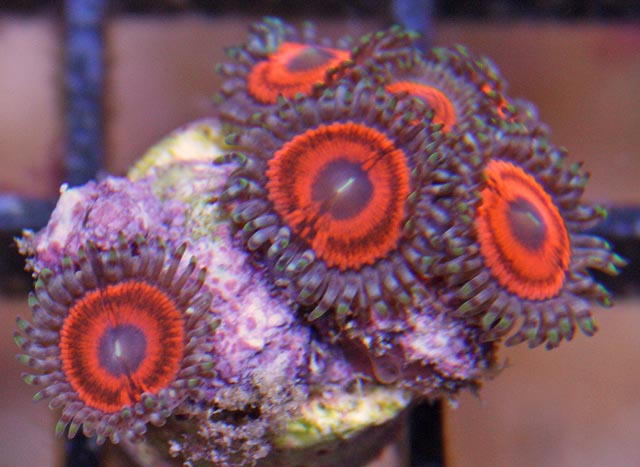
Zooplanktonare the consumers of the food web, and need to eat other organisms for their nutrients. They may consume other plankton, like algae and the larvae of other organisms. Some examples of zooplankton are amphipods, copepods, and larvae of other marine organisms. Dinoflagellates, a form of algae, are often considered zooplankton and phytoplankton, depending on their species and whether they are autotrophic (producing their own nutrients).
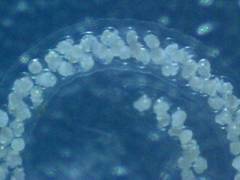
- Copepods live in both marine and fresh water. They can also be planktonic, benthic, or live in ephemeral ponds on the mainland. These are the most populous of the planktonic community, feeding at night, and sinking to the substrate during daylight hours. They are considered to be crustaceans with an exoskeleton, and are often transparent. Copepods are mostly herbivorous, feeding on phytoplankton, but many of the larger species will feed on smaller copepods. They are an important food source not only in our oceans, but also in the marine aquarium. Corals and fish will often consume copepods. Additionally, copepods help with algae control. They will feed on many forms of algae, including coralline algae (a form of red algae). Many hobbyists will stock their sumps/refugiums with copepods. Most copepods are visible with the naked eye.
- Amphipods live in both marine and fresh water. Like copepods, they are also a crustacean. These are often found free floating in aquarium water. Many amphipods possess a symbiotic or commensal relationship with other organisms, such as jellyfish. Amphipods are mostly considered to be scavengers, digesting the dissolved organic matter or detritus in the water. Some will also feed on phytoplankton or other zooplankton. Although they range in size from less than a millimeter to almost a foot in length, amphipods are on average, about a third of an inch long. As with copepods, amphipods also are a good neighbor in your marine aquarium. They will feed on the detritus in the tank and feed on microalgae as well as providing a food source for your fish and marine invertebrates.
Baterioplankton are prokaryotes (lacking membrane bound organelles), and are commonly the “decomposers” of the food chain. They will consume the organic byproducts (waste) of other organisms. As a result, they pose an important role in remineralisation, nitrogen fixation, nitrification, denitrification, and methanogenesis. Many aquarium test kits are geared towards testing for nitrite and nitrate in the water. Bacterioplankton have a major impact on those concentrations. Zooplankton will also feed on bacterioplankton.
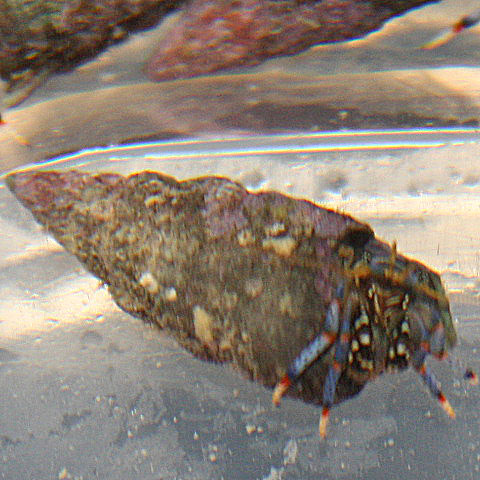 Cyanobacteria are commonly called blue green algae, but they aren't algae at all. They are actually bacteria called cyanobacteria. The major difference between cyanobacteria and other algae is that cyanobacteria are prokaryotic and the “true” algae are eukaryotic (possessing membrane bound organelles). In addition, true algae perform photosynthesis via their chloroplasts while cyanobacteria use thykaloid membranes to conduct photosynthesis. They do this by splitting carbon dioxide and water to make organic compounds, with oxygen as a byproduct. Cyanobacteria are also considered phytoplankton as they are autotrophic, producing their own nutrients from photosynthesis.
Cyanobacteria are commonly called blue green algae, but they aren't algae at all. They are actually bacteria called cyanobacteria. The major difference between cyanobacteria and other algae is that cyanobacteria are prokaryotic and the “true” algae are eukaryotic (possessing membrane bound organelles). In addition, true algae perform photosynthesis via their chloroplasts while cyanobacteria use thykaloid membranes to conduct photosynthesis. They do this by splitting carbon dioxide and water to make organic compounds, with oxygen as a byproduct. Cyanobacteria are also considered phytoplankton as they are autotrophic, producing their own nutrients from photosynthesis.
References
Borneman, E. (2001). Aquarium Corals: selection, husbandry, and natural history. Neptune City, NJ: T.F.H Publications.
Campbell, N., Reece, J., & Mitchell, L. (1999). Biology (5th ed.). Menlo Park, CA: Addison Wesley Longman, Inc.
Dakin, N. (1992). The Macmillan Book of the Marine Aquarium: a definitive reference to more than 300 marine fish and invertebrate species and how to establish and maintain a reef aquarium. New York, NY: Macmillan Publishing Company.
Fenner, R. M. (2008). The Conscientious Marine Aquarist: a common sense handbook for successful saltwater hobbyists. Neptune City, NJ: T.F.H. Publications, Inc.
Plankton. (2011). Retrieved on May 13, 2011 from http://en.wikipedia.org/wiki/Plankton


